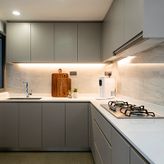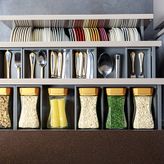In This Article
Power cuts have always been an inconvenience. But even more so when we have to work from home! It’s no wonder people are searching for the best inverter for home right now!
In the face of heat and humidity, working fans, lights and a stable internet connection will prevent tempers from flaring and help keep you and you and your family sane. But before you buy an inverter, you need to know what your home needs, and which device can best meet your requirements.We’ve compiled all you need to know about choosing the right inverter for your home in this handy guide.
What are inverters?
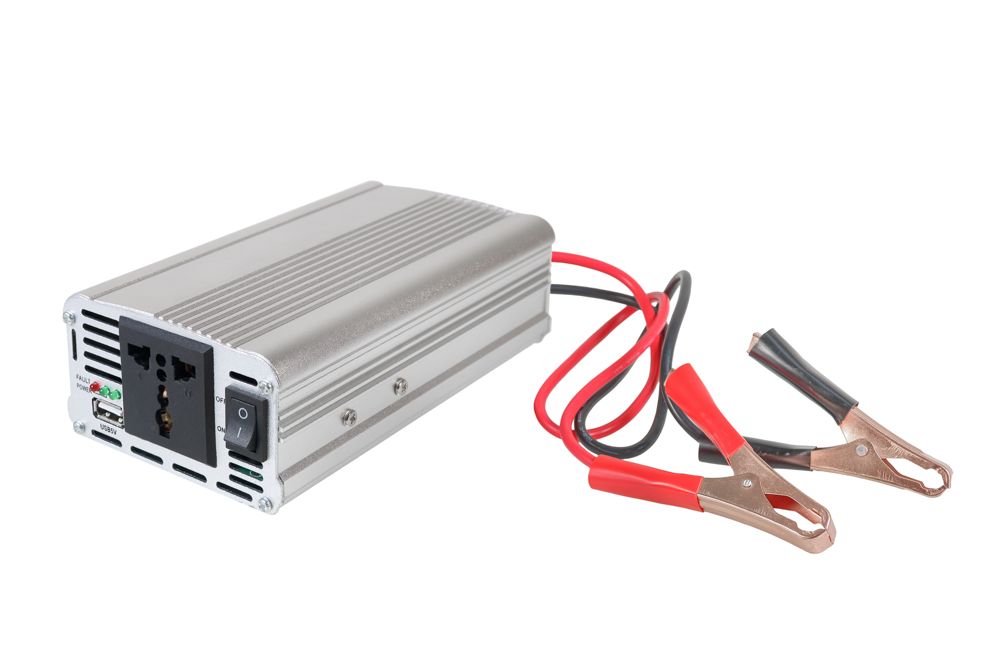
In simple words, an inverter is a device that converts electrical power from direct current into alternating current. Batteries store energy in the form of direct current, while appliances in our homes need alternating current. So the inverter converts stored energy into alternating current as and when needed to power the house. So, in case of a power outage, this device can be used as a backup.
What are the types of inverters in India?
#1: Pure sine wave
This inverter supplies current from the battery in a clean and reliable manner, similar to a normal wall socket. The output from this inverter is in a sine waveform, that is similar to a utility supply.
Since home appliances are designed to work on this pattern, this is the best inverter for home. If you intend to use high-powered appliances like microwave ovens, televisions, and air coolers during a power outage, this device is efficient without consuming much power.
A pure sine wave inverter is the best choice for home if you need to run multiple devices, as it can adjust the voltage as per power requirements. They might, however, be on the expensive side.
#2: Modified sine wave
This kind of inverter does not offer a completely smooth transition like that of a sine wave inverter. It might even take a brief pause while shifting phases. Such an inverter works well with multiple devices, but can occasionally affect the efficiency of said devices. On such occasions, it will be manifest in the form of dimmer lights or a humming noise from appliances.
This inverter works well for appliances with resistive loads and those that do nor need a start-up surge of power. These are also easier on the pocket than pure sine wave inverters.
#3: Square wave
Such inverters generate square-shaped waveforms. These generators are less efficient as compared to the other two. However, if you need to connect only modest devices with universal motors into your inverter, then this is a good option. Such inverters can, however, be noisy.

How to choose an inverter
Step 1: Calculate power requirement
To zero in on the best inverter for home, you need to identify the power requirement. This includes identifying devices that will be connected during a power outage, such as bulbs, fans, tubelights, mobile phone chargers and wifi routers. Here’s a list of common appliances and the energy consumed by each:
- Mobile phone chargers: 5W or less
- Wifi routers: 5W or less
- Electric bulb: 7–60 W
- CFL: 10–25 W
- Fan: 75–90 W
- TV: 120 W
- Computer: 150–250 W
- Air coolers: 250–300 W
- Mixers and grinders: 300–400 W
- Induction cookers: 1000–1500 W
The above list is a general idea of energy consumed. You would need to identify the electrical consumption of each device you wish to connect to the inverter and calculate the overall consumption. This is the first step to choosing the best inverter for your home.
Step 2: Understand necessary capacity
Under ideal conditions, the overall power consumption should be the same as the capacity of the inverter. However, the incoming power in the electrical system is hardly as efficient. So the power factor, measured based on how efficiently incoming power is used, is 0.8 for residential use.
So, divide the total electricity consumption in watts by 0.8 to arrive at the inverter capacity, measured in VA. This is the maximum inverter load, if all the appliances are being used at the same time. Now, you can select an inverter. Also keep in mind that you might not find a device with the exact VA value as your calculations. In this case, opt for an inverter with higher capacity.
If you are seeking a simpler method of identifying a suitable inverter, Exide will help find the right one for you.
Step 3: Decide on battery size
Having selected the best inverter, you now need to choose the right battery size in order to let it function optimally. The battery size is measured in Ah.
Decide on a time period for which you need the inverter to provide backup. For example, if you are opting for a 600 VA inverter and wish to use it for 4 hours, the required battery size is as follows:
600*4 = 2,400VAh
Since a basic inverter battery has a capacity of 12V, battery size is 2,400/12 = 200Ah
As with the inverter, if the exact capacity of battery is not available, opt for one with higher capacity.
You also need to keep in mind the type of battery. These are as follows:
- Lead acid: Most common type of batteries. These are lightweight, rechargeable and produce sufficient current. However, they usually last 3-4 years and need regular maintenance.
- Tubular: Most popularly used inverter battery. These are highly efficient and remain operational for over 8 years. However, they can be slightly expensive.
- Maintenance free: Sealed lead acid batteries that do not require frequent checks and topping up to maintain electrolyte levels. They are costlier than lead acid batteries, and have a life of 4-5 years
Popular choices in the market
#1: Luminous Eco Watt Inverter 650 VA/12V for Home
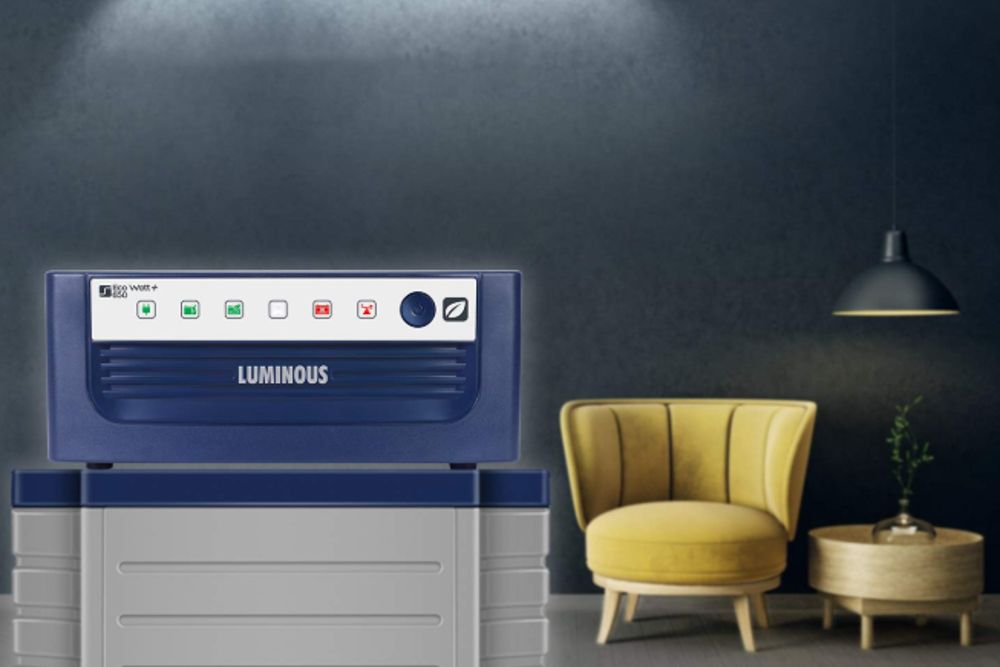
This package includes an inverter and UPS. The square wave inverter comes with protection against overload, short-circuit, deep discharge, reverse polarity and input mains. It can provide a power backup of 352–387 W. You should opt for a battery with capacity 120–150Ah for this device.
Price: ₹2,890.00
#2: Luminous Zelio+ 1100 Home Pure Sinewave Inverter UPS
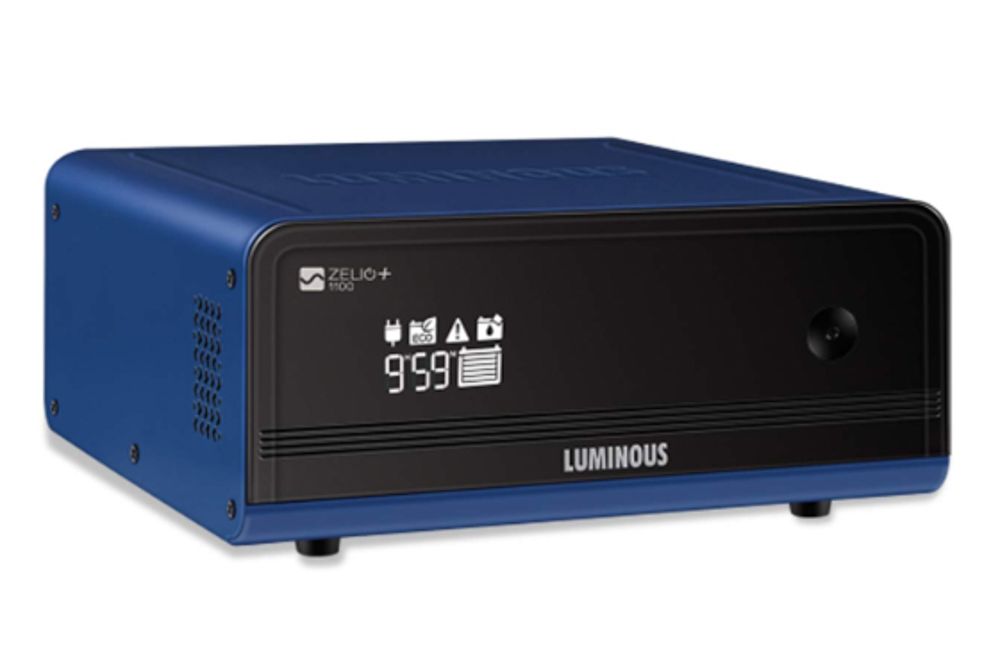
As its name suggests, this pure sinewave inverter is safe for sensitive appliances with sinewave input. It keeps your appliances safe by protecting against overload, short-circuit, deep discharge, reverse polarity and input mains. It provides 756W of power, and is best paired with a 150Ah battery. What’s more, this inverter is noiseless!
Price: ₹5,308.00
#3: Microtek Ups 24×7 Hb 950Va Hybrid Sinewave Inverter
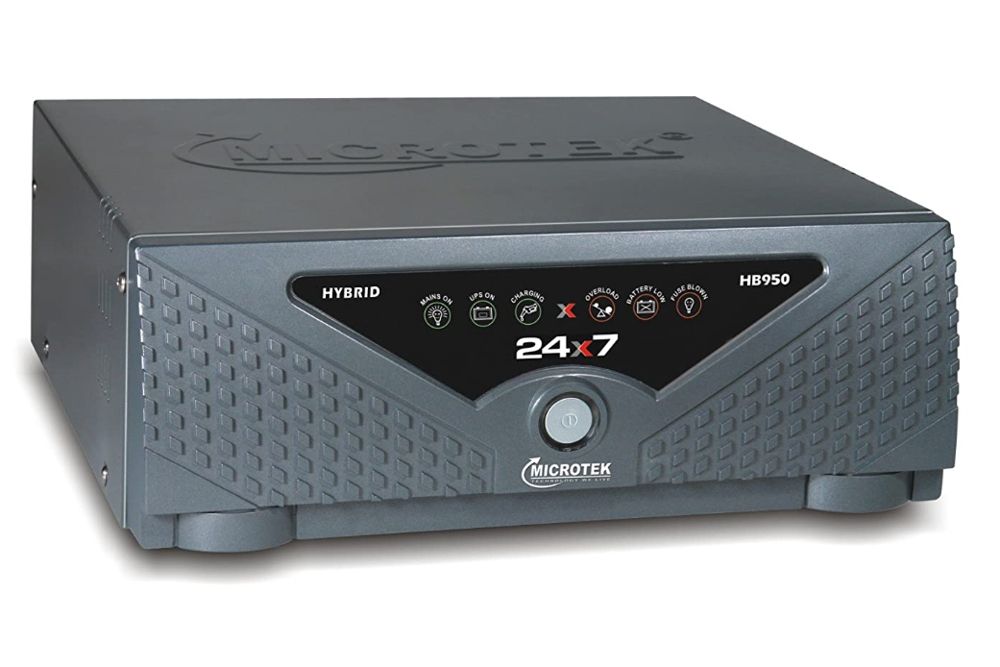
As a contender for the best inverter for your home, this device can provide 760 W of output power and works well with batteries of capacity upto 220Ah. It also comes with an in-built bypass switch.
Price: ₹4,160.00
#4: Microtek Ups Sebz 1100 Va Pure Sinewave Inverter
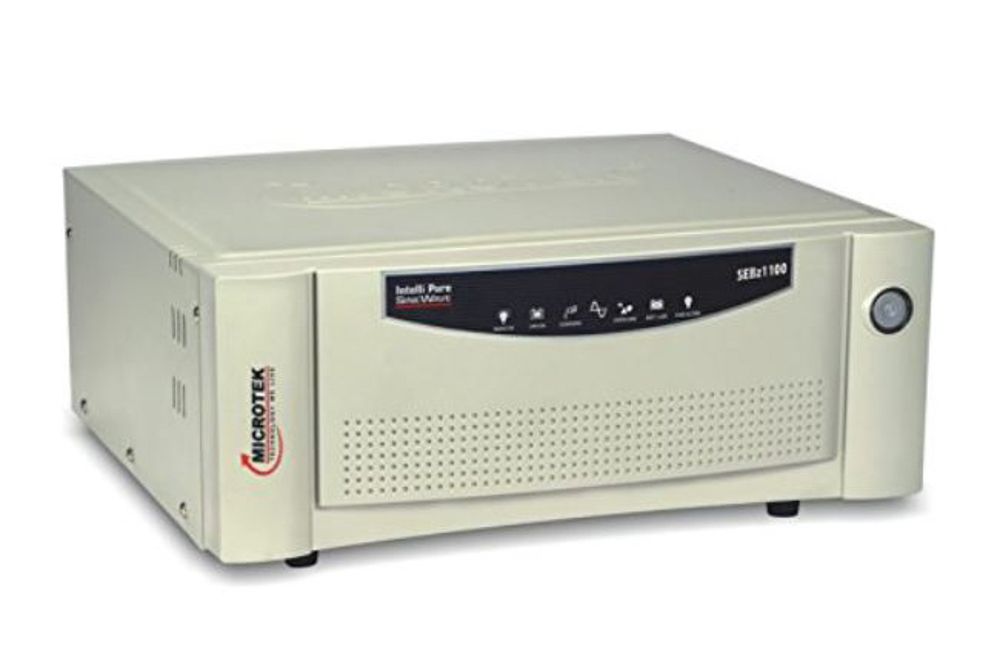
This budget-friendly inverter can provide output power of up to 760W, which should support the average Indian household with ease. It can work with a range of inputs from 100–300V. Moreover, it has features like smart overload sensing and short circuit protection. It also has a multi-stage battery charger that reduces power consumption. It’s easy to maintain as well!
Price: ₹4,500.00
#5: Su-Kam Falcon Eco 1000Va Sine Wave Inverter
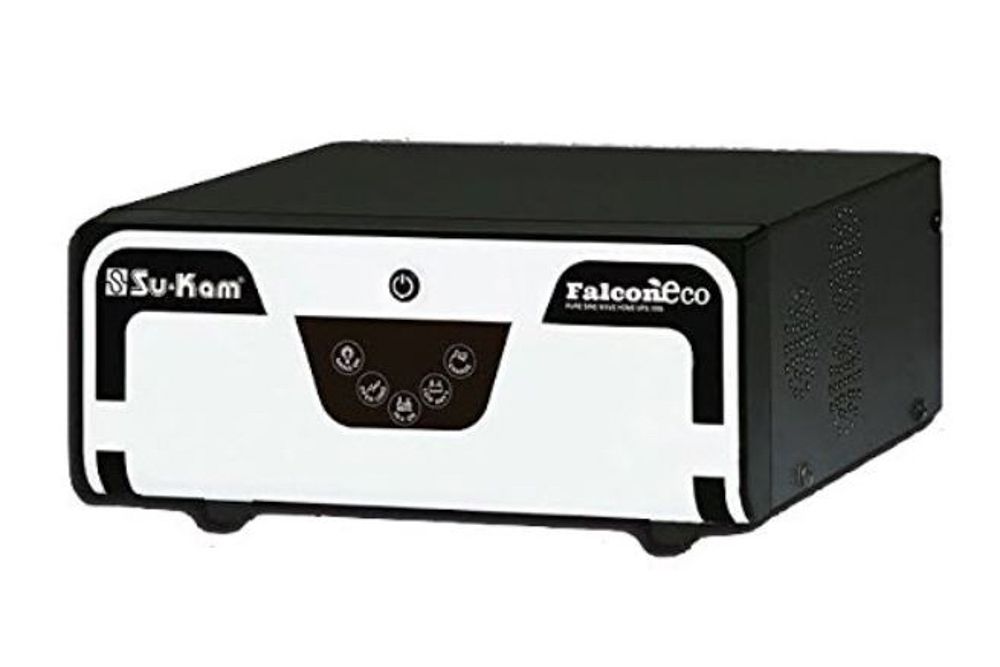
This device is enough to power the requirements of a large Indian household. The 1000VA inverter comes with automatic overload sensors that control the battery charging efficiently. Its unique technology allows it to manage current up to 300% of its capacity. This is the best inverter for home, especially if you have an irregular power supply.
Price: ₹4,420.00
Precautions
The best inverter for your home will keep it operational even in the midst of a long power cut. However, you need to take some precautions from your end as well.
- Check on the wiring: Check the wiring of your house before purchasing an inverter. Most people choose to isolate appliances like air conditioners and refrigerators. If you plan to do the same, consult an electrician.
- Placement: The inverter should always be in a cool and dry place, out of reach of children. The device should always be on level ground. You can invest in an inverter trolley if necessary. Also ensure that the device is away from direct sunlight, possible sources of heat, and flammable material.
- Proper earthing: Ensure that your home has proper earthing facility to cut down on the possibility of accidents like short circuits and electrocution. Avoid touching the device with wet hands since it might not always have a shock-proof body.
- Maintenance: Clean the inverter and battery with a microfiber cloth to prevent the accumulation of dust. Maintain a schedule to check on the water level in the inverter and refill it at regular intervals.
How to take care of the inverter and batteries?
Now that you have chosen the best inverter for your home, here are a few tips to maintain it over time. An inverter is a long-term investment, so it is essential to take proper care of it to ensure optimal functioning.
- Prevent overloading: Do not connect multiple appliances that are not needed. Avoid connecting devices with high electrical consumption like refrigerators, air conditioners, water heaters and washing machines. If you need to connect an appliance like a mixer and grinder, switch off most other appliances to prevent overloading.
- Regular care: Socket connections in the inverter can rust due to humidity or water spillage. Apply grease on them to prevent rust. In case rust forms on your inverter, use a mix of baking soda and hot water to remove it. Also wipe the inverter with a microfiber cloth to prevent the accumulation of dust.
- Battery care: Tubular and lead batteries require distilled water to be regularly replenished. Maintain a schedule to do it timely, to ensure a long-lasting inverter. Moreover, discharge your battery completely once a month and charge it over again to rejuvenate the electrolyte solution in the battery.
Also check out Easy Ways to Save Electricity during the lockdown.
Check out the Livspace modular journey:
Send in your comments and suggestions to editor@livspace.com.




























